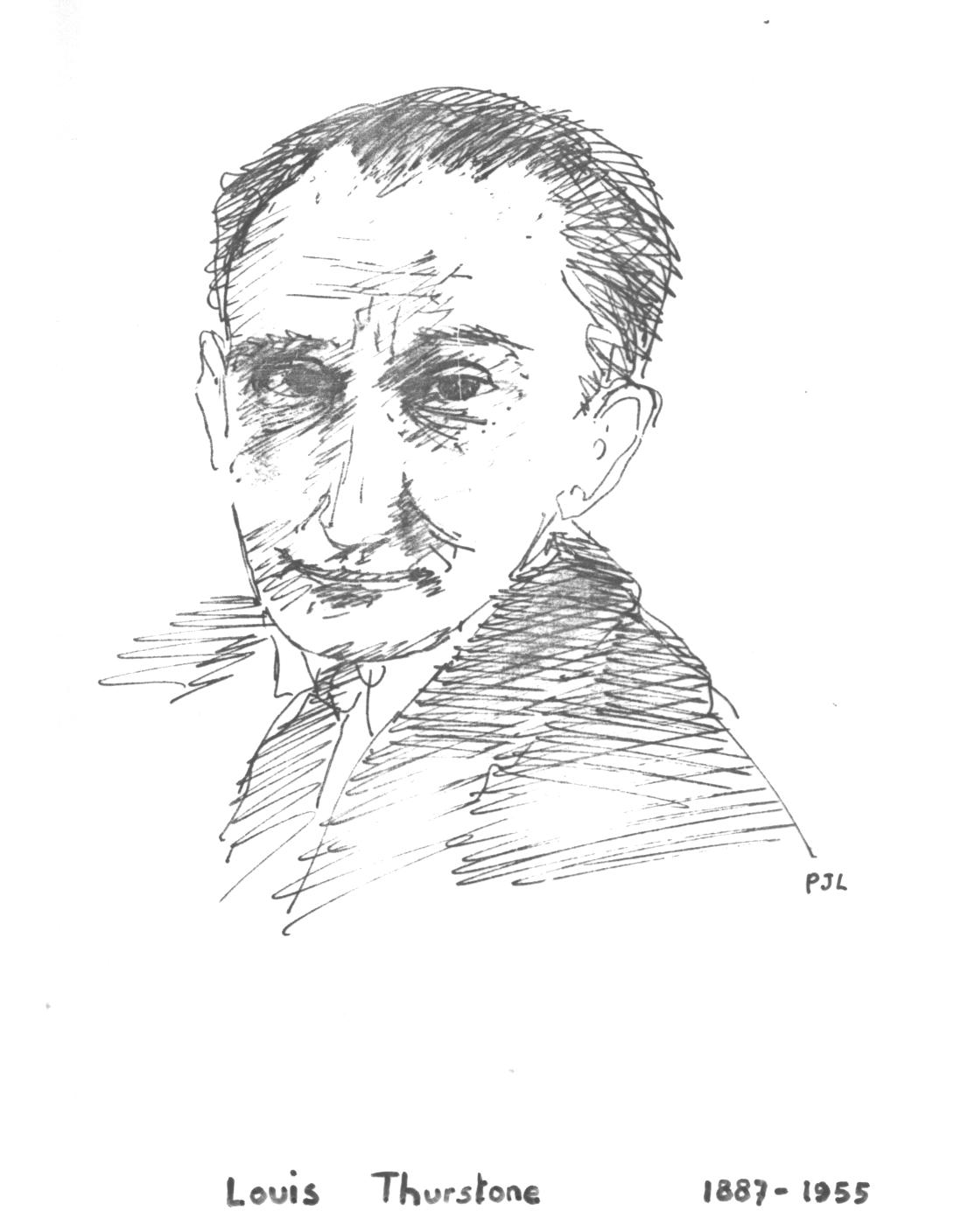Louis Thurstone
and
Multiple Factor Analysis


A great step forward in factor analysis occurred in 1935 when Louis Thurstone published his book entitled “Multiple-Factor Analysis”.
Thurstone was originally trained as an electrical engineer and worked for some time in Thomas Edison’s laboratory before becoming a psychometrician. He reasoned that intelligence is multifaceted, as one can be of average intelligence but be a highly talented musician, or writer, or mathematician, and so on. From this point of view there are multiple factors in the results of psychometric tests whose various combinations define the unique level of intelligence of each individual.
The calculation of multiple factors from a battery of measurements (or observations) on a group of individuals is not straightforward. It can be compared to the calculation of the dominant modes of oscillation of a vibrating body. This task is known by mathematicians and physicists as a problem of calculating the eigenvectors from the physical characteristics of the vibrating body. In the study of intelligence, the multiple factors are in fact the eigenvectors (or modes of vibration) computed from a table of coefficients of correlation between the various psychometric tests. It is not something that psychologists could readily do in Thurstone’s time, as they did not have the luxury of sophisticated computers and statistical programs that we enjoy today. But Thurstone had studied electrical engineering. Hence, he knew how to extract mathematically the eigenvectors from a table of correlation coefficients.
Thurstone appropriately referred to his multiple factors of intelligence as “the Vectors of Mind” because of their relation with eigenvectors,.
If intelligence could be depicted in a three-dimensional space, then each test of intelligence could be represented as a point on a sphere. (In reality it appears that there are many more factors of intelligence.)The distance between two points on the sphere is related to the degree of correlation between the two tests. If the points are close, then they are positively correlated, meaning that a high value in one test corresponds with a high value in the other, and so the same for low values. If the points are at an angle of 90 degrees on the sphere then they are uncorrelated (or independent of each other). In this case there is no (linear) relationship between the two tests.
The logo on the frontispiece of Thurstone's book on Multiple-Factor Analysis is an illustration of a case with three factors, each represented by the vertices of a spherical triangle. Points at or around the vertices are more or less pure tests, meaning that they mainly express only one of the three factors. Points at or close to the sides of the triangle represent hybrid tests that are sensitive to two of the three factors, which are represented at the corresponding vertices. Finally, points on the inside of the triangle are defined by tests whose results are the expression of mixtures of the three factors. Thurstone's logo is a neat graphical illustration of Multiple-Factor Analysis.
Thurstone identified seven factors of intelligence, namely: reasoning, verbal memory, word fluency, number facility, role memory, perceptive speed and spatial relations. In his view, human intelligence has evolved in a baffling seven-dimensional space. This begs the philosophical question whether 7-dimensional intelligence really exists or reduces to a mere mathematical construction.
A Google search on the Internet (November 2005) for the term “factor analysis” yielded about 1,500,000 hits.